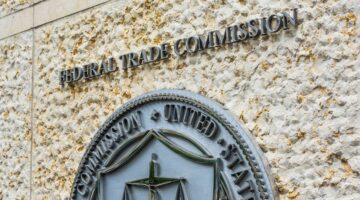
While it can be relatively straightforward to have online sites and accounts taken down, translating this to meaningful legal action and financial compensation in the real world is not so clear-cut. At times it can be better to find ways to live with infringement in the short term in a bid to bring actions in the courtroom.
The online marketplace and its limitations
The Internet, coupled with the Internet-of-Things (IoT) infrastructure, has had a far-reaching impact on customer behaviour patterns recently. IoT can be best understood as an ecosystem of physical and tangible objects connected through the Internet. Devices such as hand-held barcode scanners, bill payment machines, apps which facilitate live tracking of shipments, etc, have enlarged the reach of traditional markets, resulting in continuous developments in the various retail and sales models brands use.
The functionality and ease of e-commerce have given rise to various advertising media that can easily result in a transaction in no time – which is not often the case in physical marketplaces. Advanced banking networks provide necessary support to all entities involved in transactions over the Internet, making online marketplace a world in itself.
However, the Internet’s anonymity and lack of verification standards have made website impersonations and counterfeit listings on e-commerce platforms more common than one would wish. Automated takedown mechanisms, digital rights management systems and strict requirements under local safe-harbour provisions have made takedown of content from the Internet easier. Since in most cases an online intermediary will look at a counterfeit listing merely as infringing content and not as a case of counterfeiting, takedown of content is a relatively easy first step. Subsequently, court intervention becomes necessary to obtain further information from such platforms and trace the digital footprint of entities involved in the sale of counterfeits on the Internet and the scale of their operations.
What’s new in online counterfeiting?
Notable trends in this space are surfacing as completely new forms of counterfeiting. Since the customer does not physically interact with the product before making the purchase, the chances of what is ordered and what is ultimately delivered being different have increased substantially. There are also instances of non-delivery of products and fraud being committed on customers. Loose know-your-customer policies followed by banks, telecom operators and state entities make it even harder for the victims and brand owners to ascertain the identity of the real individuals. Features such as information masking and privacy protections further add to the already existing layers of anonymity about the infringers. In this context, banks have a bigger role as they have the most credible information regarding the entities behind counterfeiting. It is only through the banks to which payments are made that one can follow the money trail and reach the real individuals. The banks are also required to upgrade their verification systems in order to keep up with the various kind of frauds taking place currently.
Website impersonators are also trying new ways to confuse the users and make payments through their websites. Source codes of the original webpages are being linked with the impersonating webpages in a way where real-time changes take place in the impersonating webpage every time a change is taking place in the original website. This makes it almost impossible for an end-user or customer to differentiate between the original website and the imposter.
Diversion of traffic away from the original website or platform has become a major problem for brands. Common tactics deployed to divert traffic include opening fake social media accounts, purchasing ad-words containing trademarks of the original brand to rank the impersonating website higher in the search results, and using meta-tags in the source codes.
Counterfeiting in the metaverse
Web 3.0, popularly known as the metaverse, raises the issue of counterfeiting of digital assets. Transactions of digital assets such as an outfit for your digital avatar or any proprietary work need appropriate permission from the owner of such work. Customers transacting in Web 3.0 must verify the seller through background of its blockchain address, smart-contracts or smart royalty payment mechanisms. A counterfeit digital asset can be anything that does not come secured with appropriate legal rights, remedies and freedom to sell it further.
As the idea of Web 3.0 is to offer transparency, interoperability, decentralisation and autonomy to users, it remains to be seen what the scale of such transactions in the future will be and how brand owners will enforce their rights – in the absence of centralised regulatory authorities in the metaverse. Excessive enforcement by brands may hamper the interoperability of Web 3.0 systems and the collaboration between users it ultimately seeks to offer.
Challenges in online and offline counterfeiting
One of the end goals of any anti-counterfeiting action is always some financial compensation that can only be computed if there is reliable evidence to show the sales of counterfeits and its resultant damage to the brand or trademark owner. Collection of evidence is relatively easy on the Internet compared to a physical marketplace as there is always a risk factor involved in physical investigations of the wholesalers and manufacturers of counterfeit goods. Several tools available on the Internet assist in the collection of evidence against counterfeiters as long as they have some internet presence. Evidence collection needs to be continuous, while exercising sufficient caution so that the counterfeit products are not relocated, or the online seller does not become temporarily inactive, as the case may be. This evidence is helpful in the later stages of legal proceedings when motions are made for expeditious disposal of the actions and award of damages by the court.
Customer complaint mechanisms or the legal compliance departments of platforms in the online marketplace are not always uniform and well structured meaning that court orders cannot always be easily enforced. These platforms largely follow an automated system of initial responses when an order of court is communicated. The lack of one-to-one channels of communication between the brand owner and person in-charge of the platform makes it even more difficult to enforce court orders expeditiously.
Some platforms may even take down content in the absence of a court order when a brand approaches them through official means and points out the counterfeit listings on their platforms. However, in cases where counterfeiting is not apparent on its face, many e-commerce platforms and online marketplaces tend to take the defence that they are not the ones who should be determining whether a listing, product or act of a seller amounts to infringement of trademark or copyright. There is always an insistence on a court order by such platforms when any information is sought pertaining to sellers, registrants of domains or users of email IDs etc. However, one can see significant reluctance from domain registrars when they are asked to comply with court orders. While some may refuse to follow the directions of a court based outside the territory where the respective domain registrar is registered, some also challenge court decisions actively when the court is asking them for something more than a mere takedown.
Taking actions in the courts
Court proceedings can be highly unpredictable and can go in any direction if there are shortcomings in the way evidence is produced before the court. As highlighted above, collection of evidence must be prioritised at all stages of an anti-counterfeit action. When the counterfeiters or defendants participate in court proceedings, their initial strategy might be to deny that the counterfeit products in question are sourced from them. In such cases, it is ideal to collect evidence of counterfeiting against the party before initiating a legal action. Such evidence may include photographs of the counterfeit goods, information relating to the number of workers engaged by the entity, its sales and profit figures, details of manufacturer or supplier, regions where products are shipped, prices at which counterfeit products are sold and many more. The nature of relevant evidence may vary according to the counterfeit product in question.
Brand owners must also ensure that court orders are followed and executed correctly. A favourable injunction will not yield any success until it is executed and after damages have been awarded. Keeping an eye on the counterfeiter during the lifecycle of an anti-counterfeiting action is also important as habitual offenders are likely violate court orders. Continuous market surveys will not only generate new leads for the brand owner but will also strengthen the ongoing legal proceedings against a counterfeiter who is found to be acting in violation of a court order. Any anti-counterfeiting action can proceed at a much faster pace when it is established that the counterfeiter’s acts amount to continuous violation of a court order and infringement of the brand’s rights.
The evidence collected in this process also allows brand owners to determine the scale of the counterfeiter’s operations and accordingly seek damages. Courts should be conscious of the presence of multiple types of counterfeiters in the market. While some may only be small-time retailers of counterfeit goods, there are also entities who are operating large-scale counterfeiting businesses that factor in court expenses and penalties as a part of the cost of running their businesses. Therefore, brand owners need to be particularly wary of such entities and ensure that adequate evidence is present to support the quantum of damages they are seeking at the end.
With regard to e-commerce marketplaces and curbing counterfeiting on the Internet, the foremost requirement in a legal proceeding is to understand the law relating to the kind of marketplace you are dealing with and applying it to your case. Counterfeiting on the Internet is commonplace, and countries all over the world are attempting to find a solution which makes e-commerce platforms more accountable for third-party counterfeit listings while not stifling free speech and freedom to trade. More often than not, e-commerce platforms get defensive when information regarding counterfeit sales and details of the sellers rather than a mere request for a take-down is sought. In this case, brand owners must take a different course of action and leverage other statutory provisions. For example, non-compliance with requirements under consumer protection laws can increase the chances of e-commerce platforms being stripped of the safe-harbour protection available under the domestic laws. For any effective anti-counterfeiting strategy in the e-commerce space, it is important keep abreast of the key international developments as they can reverberate into relatively smaller jurisdictions and platforms. Once a determination is made by a court regarding the culpability of a particular type of online intermediary involved in a counterfeit transaction, it is easier for other courts to follow a similar approach.
Legal systems have their own limitations, and a well-coordinated concerted effort is required from law enforcement agencies to ensure that evidence is preserved, and anti-counterfeiting actions are executed smoothly and safely. Brands must also look at anti-counterfeiting actions on case by case. Where the scale of counterfeiting is insignificant, the ultimate settlement amount will be similarly low. In such cases, brands must act fast and attempt to put an end to such activities by adopting the least aggressive approach, namely by sending legal notices.
When counterfeiters are operating a large-scale business, however, it is preferable to first investigate such entities, find out about their supply chains and manufacturing units and gather as much evidence as possible against them before initiating a legal action. Having good evidence on record at the start of a legal action will give rights holders the upper hand in court proceedings and settlement negotiations. Ultimately, almost all kinds of online counterfeiting have their fair share of similarities with counterfeiting in the bricks-and-mortar world. Investigations, collection of evidence and strategic use of applicable statutes and rules are of utmost importance in any anti-counterfeiting action.
- SEO Powered Content & PR Distribution. Get Amplified Today.
- PlatoData.Network Vertical Generative Ai. Empower Yourself. Access Here.
- PlatoAiStream. Web3 Intelligence. Knowledge Amplified. Access Here.
- PlatoESG. Carbon, CleanTech, Energy, Environment, Solar, Waste Management. Access Here.
- PlatoHealth. Biotech and Clinical Trials Intelligence. Access Here.
- Source: https://www.worldtrademarkreview.com/guide/anti-counterfeiting-and-online-brand-enforcement/2023/article/taking-online-anti-counterfeiting-efforts-the-internet-the-real-world
- :has
- :is
- :not
- :where
- $UP
- a
- About
- above
- According
- accordingly
- accountable
- Accounts
- Act
- acting
- Action
- actions
- actively
- activities
- acts
- add
- address
- Adopting
- advanced
- Advertising
- After
- against
- agencies
- aggressive
- aggressive approach
- All
- allows
- almost
- already
- also
- always
- amount
- amounts
- an
- and
- Anonymity
- any
- anything
- apparent
- applicable
- Applying
- approach
- approaches
- appropriate
- apps
- ARE
- AS
- asking
- asset
- Assets
- assist
- At
- attempt
- attempting
- Authorities
- Automated
- available
- avatar
- award
- awarded
- away
- background
- Banking
- Banks
- based
- BE
- become
- becomes
- been
- before
- behind
- being
- BEST
- Better
- between
- bid
- bigger
- Bill
- blockchain
- brand
- brands
- bring
- business
- businesses
- but
- by
- CAN
- cannot
- case
- cases
- caution
- centralised
- chains
- challenge
- chances
- change
- Changes
- channels
- codes
- collaboration
- collect
- collection
- come
- committed
- Common
- communicated
- Communication
- compared
- Compensation
- complaint
- completely
- compliance
- comply
- concerted
- connected
- conscious
- consumer
- Consumer Protection
- content
- context
- continuous
- copyright
- Cost
- Counterfeit
- counterfeiting
- countries
- coupled
- course
- Court
- Courts
- credible
- curbing
- Currently
- customer
- Customers
- damage
- dealing
- decentralisation
- decisions
- defence
- defendants
- defensive
- delivered
- departments
- deployed
- details
- determination
- Determine
- determining
- developments
- Devices
- different
- differentiate
- difficult
- digital
- Digital Asset
- Digital Assets
- digital rights
- direction
- directions
- divert
- does
- domain
- domains
- Domestic
- down
- during
- e-commerce
- e-commerce platforms
- ease
- easier
- easily
- easy
- ecosystem
- Effective
- effort
- efforts
- end
- enforce
- enforcement
- engaged
- ensure
- entities
- entity
- established
- etc
- Even
- Every
- evidence
- example
- executed
- existing
- expenses
- eye
- Face
- facilitate
- factor
- fair
- fake
- far-reaching
- FAST
- faster
- Features
- Figures
- financial
- Find
- First
- follow
- followed
- Footprint
- For
- foremost
- forms
- found
- fraud
- Free
- Free speech
- Freedom
- from
- functionality
- further
- future
- gather
- generate
- get
- Give
- given
- Go
- Goals
- good
- goods
- had
- hand
- harder
- Have
- having
- helpful
- higher
- Highlighted
- highly
- holders
- How
- However
- HTTPS
- idea
- ideal
- Identity
- ids
- if
- Impact
- importance
- important
- impossible
- in
- inactive
- include
- Increase
- increased
- individuals
- information
- Infrastructure
- infringement
- initial
- initiating
- interact
- intermediary
- International
- Internet
- Internet-of-Things (IoT)
- Interoperability
- intervention
- into
- investigate
- Investigations
- involved
- iot
- issue
- IT
- ITS
- itself
- jurisdictions
- Keep
- keeping
- Key
- Kind
- known
- Lack
- large-scale
- largely
- later
- Law
- law enforcement
- Laws
- layers
- Leads
- least
- Legal
- Legal Action
- legal proceedings
- Leverage
- lifecycle
- likely
- limitations
- linked
- listing
- Listings
- live
- local
- Long
- Look
- Low
- Machines
- made
- major
- make
- MAKES
- Making
- management
- Manufacturer
- Manufacturers
- manufacturing
- many
- Market
- marketplace
- marketplaces
- Markets
- May..
- meaning
- meaningful
- means
- mechanisms
- Media
- mere
- merely
- Metaverse
- might
- models
- money
- more
- most
- motions
- much
- multiple
- must
- namely
- Nature
- necessary
- Need
- needs
- negotiations
- networks
- New
- no
- number
- objects
- obtain
- of
- offer
- official
- offline
- often
- on
- once
- ONE
- ones
- ongoing
- online
- online marketplace
- online marketplaces
- only
- opening
- operating
- Operations
- operators
- or
- order
- orders
- original
- Other
- out
- outside
- over
- own
- owner
- owners
- Pace
- part
- participate
- particular
- particularly
- party
- patterns
- payment
- payments
- permission
- person
- pertaining
- photographs
- physical
- Physically
- Place
- platform
- Platforms
- plato
- Plato Data Intelligence
- PlatoData
- points
- policies
- possible
- preferable
- presence
- present
- Prices
- privacy
- Problem
- proceed
- Proceedings
- process
- Produced
- Product
- Products
- Profit
- proprietary
- protection
- provide
- purchase
- purchasing
- put
- Quantum
- question
- raises
- rank
- rather
- reach
- real
- real world
- real-time
- recently
- record
- regard
- regarding
- regions
- registered
- registrants
- registrar
- regulatory
- relatively
- relevant
- reliable
- Relocated
- reluctance
- remains
- request
- required
- requirement
- Requirements
- respective
- responses
- result
- resultant
- resulting
- Results
- retail
- retailers
- rights
- Rise
- Risk
- Risk Factor
- Role
- royalty
- rules
- running
- safely
- sale
- sales
- Scale
- Search
- Secured
- see
- Seek
- seeking
- Seeks
- seen
- sell
- Sellers
- sending
- settlement
- several
- Share
- shipped
- Short
- shortcomings
- should
- show
- significant
- similar
- similarities
- Similarly
- since
- Sites
- smaller
- smart
- smoothly
- So
- Social
- social media
- sold
- solution
- some
- something
- sought
- Source
- sourced
- Space
- speech
- stages
- standards
- start
- State
- Step
- straightforward
- Strategic
- Strategy
- Strengthen
- strict
- structured
- Subsequently
- substantially
- success
- such
- sufficient
- supplier
- supply
- Supply chains
- support
- system
- Systems
- tactics
- Take
- taken
- taking
- tangible
- telecom
- term
- territory
- than
- that
- The
- The Future
- the Law
- The Metaverse
- The Source
- the world
- their
- Them
- There.
- therefore
- These
- they
- third-party
- this
- Through
- time
- times
- to
- tools
- trace
- Tracking
- trade
- trademark
- trademarks
- traditional
- traditional markets
- traffic
- trail
- transacting
- transaction
- Transactions
- Transparency
- Trends
- trying
- type
- types
- ultimate
- Ultimately
- under
- understand
- understood
- units
- unpredictable
- until
- upgrade
- use
- users
- using
- various
- Verification
- verify
- victims
- VIOLATION
- Way..
- ways
- web
- Web 3
- Web 3.0
- Website
- websites
- WELL
- What
- What is
- when
- whether
- which
- while
- WHO
- will
- with
- Work
- workers
- world
- would
- Yield
- you
- Your
- zephyrnet












